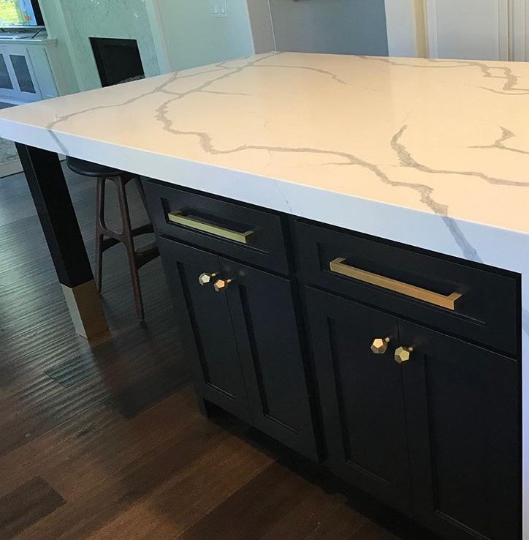Necessary Aspects to Think About When Choosing Legs For Cooking Area Island
Selecting the proper legs for a kitchen island entails a careful evaluation of multiple aspects that can significantly influence both capability and aesthetic charm. As we explore these aspects, it becomes clear that each choice can have far-reaching ramifications for the total kitchen experience.
Material Options
When picking legs for a kitchen island, comprehending the numerous material choices is crucial for achieving both aesthetic charm and architectural integrity (Legs For Kitchen Island). The option of product dramatically influences not only the longevity of the island but also its general layout and capability
Metal legs, frequently made from stainless steel or wrought iron, contribute a commercial and modern-day feeling while making certain longevity and security. These products are resistant to use and can support substantial weight, making them ideal for larger islands.
An additional alternative is crafted materials, like MDF or plywood, which can be much more affordable while still offering a range of coatings. Nonetheless, they might not offer the same degree of security as solid wood or steel. Products such as acrylic or glass can produce a contemporary appearance, though they may require added support to make certain security.
Ultimately, the option of material for kitchen island legs need to line up with the desired performance and the overall motif of the kitchen area.
Design And Style

When considering style, the shape and finish of the legs are vital. Tapered legs can supply a sense of agility and elegance, while thicker, more robust legs can share toughness and security. Furthermore, the surface-- be it painted, discolored, or natural-- ought to complement the cabinetry and countertop products to develop a unified appearance.
Additionally, the style of the legs can likewise reflect individual preference. Custom-made or ornamental legs, such as those featuring intricate makings or one-of-a-kind geometric forms, can serve as focal points, including character and personality to the kitchen. Inevitably, the appropriate option will not just boost performance but additionally raise the aesthetic appeal, making the cooking area island a standout function of the home.
Height Factors To Consider
Picking the suitable elevation for kitchen island legs is vital, as it directly affects both capability and comfort. The typical height for a kitchen area island typically ranges from 36 to 42 inches, straightening with common counter top elevations.

It is also vital to make up individuals' preferences and elevations. Personalizing the height can make certain a comfortable experience for all household participants, making the kitchen island an extra practical and enjoyable room.
Weight Support
Ensuring appropriate weight support for kitchen area island legs is important for both safety and security and performance. The cooking area island typically offers several objectives, including food prep work, dining, and extra storage, requiring a durable support structure. When picking legs, it is important to think about the general weight ability called for based upon the island's intended use and the products that will be positioned on it.
The selection of material for the legs plays a considerable role in their weight-bearing abilities. Solid timber, metal, and durable composites generally provide superior toughness contrasted to lighter materials. In addition, the style of the legs-- whether they are right, tapered, or have a pedestal kind-- can affect their capability to disperse weight effectively throughout the structure.
Always speak with the producer's specs concerning load limits to ensure that the legs can sustain the desired weight without endangering safety and security. In recap, choosing kitchen area island legs with sufficient find more information weight support is essential for developing a secure and useful culinary room.
Setup and Maintenance
Proper installment and upkeep of kitchen area island legs are crucial for guaranteeing long life and security. To begin, it is necessary to adhere to the supplier's guidelines during installment. This typically involves safeguarding the legs to the space station using ideal bolts, guaranteeing that the legs are degree and lined up. Utilizing a degree tool can aid stop wobbling and boost the general visual charm of the kitchen island.
Once set up, regular maintenance is essential to preserve the stability and look of the legs - Legs For Kitchen Island. For wooden legs, routine cleaning with a moist towel and application of suitable wood gloss can prevent wetness damages and maintain their surface. Steel legs might require a gentle cleansing remedy to eliminate oil and grime, adhered to by a dry towel to protect against corrosion development
Furthermore, evaluate the legs on a regular basis for indications of wear or damage, such as cracks or loosened joints. Tightening up screws or bolts as required can also lengthen the life-span of the legs. By sticking to these installation and upkeep practices, house owners can make certain that their cooking area island continues to be tough and aesthetically appealing for several years ahead.
Verdict

Aesthetic coherence is critical in choosing the design and layout of legs for a kitchen island, as these elements significantly affect the general setting of the room. Conical legs check that can provide a sense of lightness and beauty, while thicker, a lot more durable legs can communicate toughness and security.Picking the ideal elevation for cooking area island legs is crucial, as it directly impacts both functionality and comfort. In summary, selecting kitchen island legs with adequate weight support is essential for creating a safe and functional cooking room.
In verdict, choosing legs for a kitchen area island requires careful consideration of various variables, consisting of product options, design, elevation, weight assistance, and setup.
Comments on “Locate Resilient and Decorative Legs For Kitchen Island Makeovers”